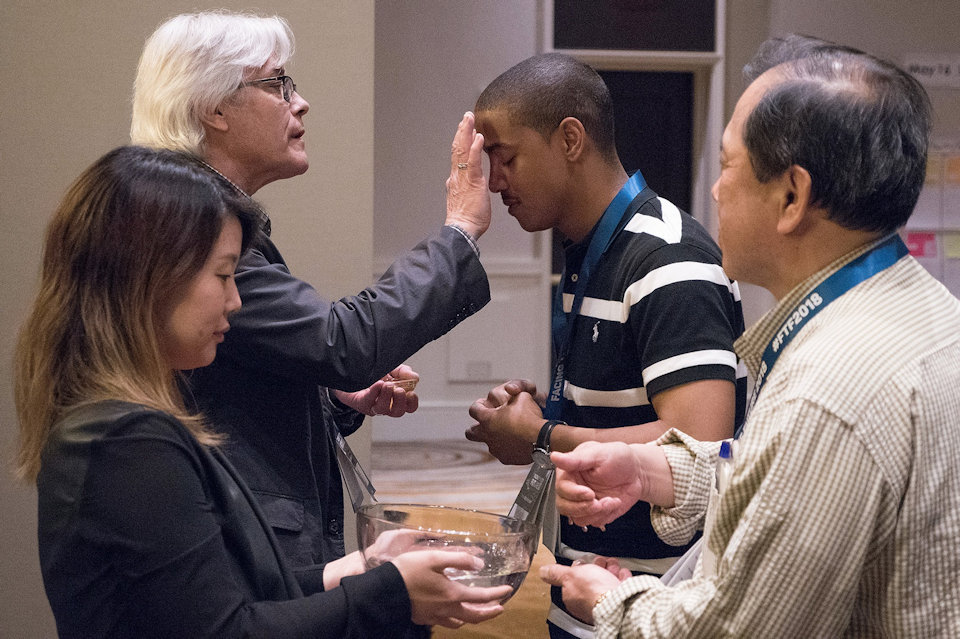The sign of the cross continues to be a personal reminder that we belong to Christ.
The sign of the cross is an ancient Christian practice, dating from at least the early third century or before. The cross and all that it stands for are central to our tradition and the heritage of all Christians. When Christians use it, in continuity with ancient Christian practice, it continues to be a personal reminder that we belong to Christ.
Some United Methodists do make the sign of the cross during prayer time or when receiving communion. Pastors may make the sign of the cross toward the congregation when blessing them at the end of the service. On Ash Wednesday the pastor or others may make the sign of the cross in ashes on the foreheads of those who come to receive them as a sign of their penitence, and is an option in the service for healing with anointing. Some also use it in prayers with the dying near the time of death.
John Wesley maintained the practice of signing the newly baptized with the sign of the cross in the baptismal rites he included in his 1784 edition of the Sunday Service, which became the official ritual of the Methodist Episcopal Church in America. At baptism it applies Christ’s victory to the newly baptized.
Neither he nor the Book of Common Prayer (used by Anglicans in England) included any other instances of using the sign of the cross. This did not mean the sign of the cross was not used, either by Anglicans or by Methodists. It means only that the one mandated use for it was at baptism.
Why is making the sign of the cross sometimes viewed as foreign to United Methodists? The answer isn’t hard to find. Wesley included the “signing prayer” at the baptism of infants, but not for those who were “of riper years.” Why? The presumption is that those of riper years would be confessing the faith for themselves at that moment, and so the contents of that prayer, which pointed to professing the faith at a later time, would not apply. Later it was dropped entirely.
What this meant for Methodists in America, then, was that by the early 20th century, Methodist worship did not call for the sign of the cross at all in its ritual. This ancient Christian sign at baptism and as a personal spiritual practice became lost to us.

Our current ritual in the Book of Worship has restored the option of making the sign of the cross on the forehead of the newly baptized:
“If desired, one or more of the following acts may be added, but these should not be so emphasized as to seem as important as, or more important than, God’s sign given in the water itself.
a) The pastor may trace on the forehead of each newly baptized person the sign of the cross…”
Many United Methodists have found this restoration powerful and meaningful. The ancient and enduring power of the sign of the cross is available for us to use as United Methodists more abundantly now than ever in our history. And more and more United Methodists are expanding its use beyond those suggested in our official ritual. If you haven’t explored how the sign of the cross may be valuable in your worship and devotional life, perhaps you may want to consider giving it a try.
Last Updated on October 31, 2023

